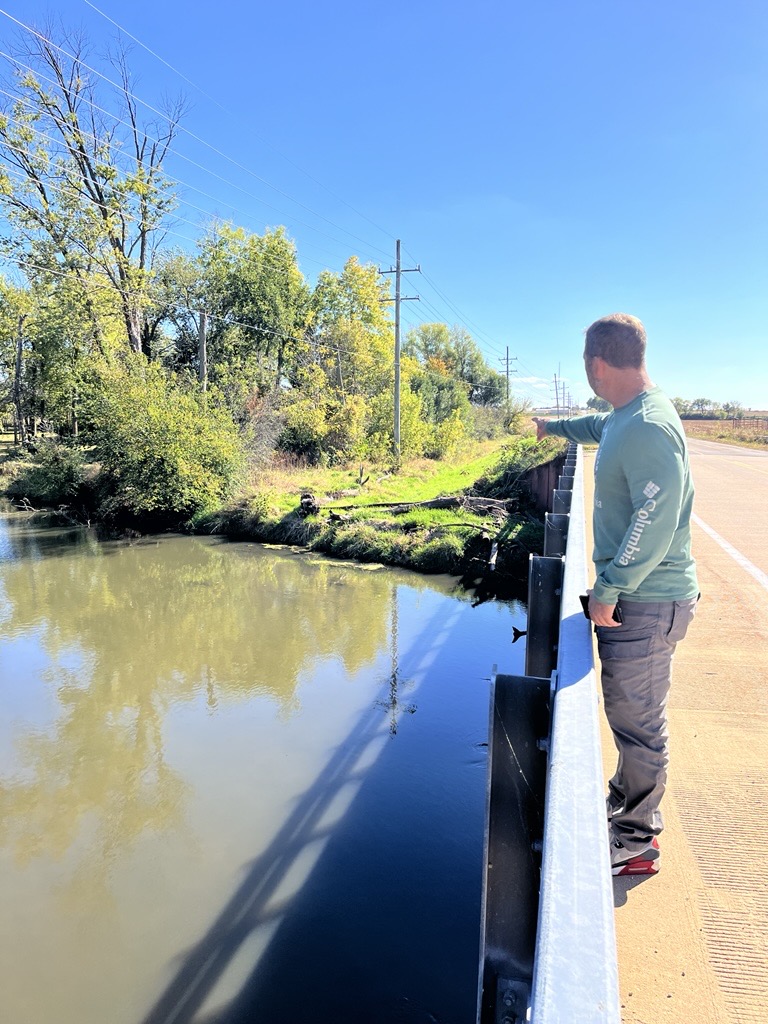Streamlining Compliance and Conservation: A Comparison of Web-Based Tools to Help Growers Navigate a Complex Landscape

At Waterborne, our team of engineers and scientists understands that translating regulatory frameworks into practical, on-the-ground solutions is no small task. Under the Endangered Species Act (ESA), the U.S. Environmental Protection Agency (EPA) requires growers to consider potential impacts to listed species when applying pesticides under the Federal Insecticide, Fungicide, and Rodenticide Act (FIFRA). While these safeguards are critical to the conservation of sensitive populations, the evolving system of mitigation requirements can be challenging for growers to interpret and implement efficiently. Additionally, producers may be interested in implementing conservation practices to prevent nutrient and sediment loss from their fields, but require additional guidance to understand a) the BMPs best suited to their land/operation, and b) what agencies/programs may be able to offer technical and financial assistance. We take a look at EPA’s newly released Pesticide App for Label Mitigations (PALM) and compare it with additional tools developed by Waterborne that meet these challenges below.
Background: EPA’s ESA Mitigation Framework
The EPA’s ESA compliance strategies for pesticides rely on a mitigation points system. Future pesticide labels will specify a total number of mitigation points growers must achieve to protect non-target species, based on the pesticide, crop, and location.
Growers can earn points by implementing field-based best management practices (BMPs), participating in conservation programs, or having favorable soil and landscape characteristics. However, determining total point requirements and credits often means navigating multiple resources, including product labels, Bulletins Live! Two, the EPA’s Mitigation Menu and PALM.
EPA’s PALM Tool: A Web-interface for Pesticide Mitigation Compliance
The U.S. Environmental Protection Agency (EPA) recently released PALM—a new web interface designed to help growers and pesticide applicators more easily navigate mitigation requirements under the Endangered Species Act (ESA). The PALM tool replaces the Agency’s earlier spreadsheet-based calculators with a web and mobile interface. While users remain responsible for following all product label requirements, PALM helps determine whether necessary mitigation levels have been met before a specific pesticide application. To gain the full benefit of this system, a user must:
- Identify ESA-related compliance language on the pesticide product label
- Access the EPA’s Bulletins Live! Two systems to determine if their field is within a pesticide use limitation area (PULA), which requires additional mitigation
- Utilize PALM to determine whether their field meets mitigation requirements to use a given pesticide
Farm-MIT: A User-Friendly Mitigation Support Tool
In collaboration with Syngenta Crop Protection, Waterborne is developing the Farmer Mitigation Intelligence Tool (Farm-MIT), a web-based application designed to help growers navigate ESA mitigation requirements with clarity and confidence.
Farm-MIT simplifies this process through geospatial integration and intelligent automation. The tool guides users step-by-step to identify pesticide requirements, calculate relief points, and select additional mitigation measures as needed.
Key capabilities include:
- Field & Pesticide Selection: Users can draw or upload their field boundaries and select planned pesticides.
- Automated Label Integration: The tool retrieves mitigation point requirements directly from pesticide labels.
- Bulletins Live! Two Connectivity: Farm-MIT automatically checks for geographically specific restrictions (PULAs).
- Geospatial Data Analysis: If desired, the tool calculates slope, soil type, and proximity to aquatic or terrestrial habitats to determine mitigation relief points.
- Confident Results: Farm-MIT output (e.g., mitigation point calculations) will be cross-referenced with PALM to ensure consistency/confidence.
- Custom Mitigation Lists: If additional points are needed, Farm-MIT generates a custom list of suitable mitigation practices based on cost, effectiveness, and field suitability.
Conservation Webtool: The Liaison between Farmers and their Conservation Goals
Our experts have developed an agriculture conservation web application that helps support the soil, water, and wildlife conservation goals of farmers, ranchers, and landowners. This webtool allows a landowner to self-select their field on a digital map and identify particular concerns around sediment erosion and nutrient loss. The tool utilizes the best available geographic and soil data to narrow down what NRCS conservation standards (i.e., BMPs) would best suit the land characteristics of a particular plot and conservation goals. Additionally, the web application offers contact information for technical experts at the local and county level, serving as the liaison between producers and the resources that can help them thrive.
Conclusion
Navigating the intersection of pesticide regulation, species protection, and on-farm conservation is only becoming more complex. With PALM and Waterborne's Farm-MIT and conservation webtools, growers now have access to a powerful suite of resources designed to turn that complexity into confidence. We’re proud to support producers as they adapt and lead in a changing landscape.
For more information on these tools, please contact Andy Jacobson at jacobsona@waterborne-env.com.

Celebrating Geographic information systems (GIS). Properly.
READ MORE

What do Waterborne and Turkeys have in Common? We’re all Engineers by Nature.
READ MORE

Streamlining Compliance and Conservation: A Comparison of Web-Based Tools to Help Growers Navigate a Complex Landscape
READ MORE



